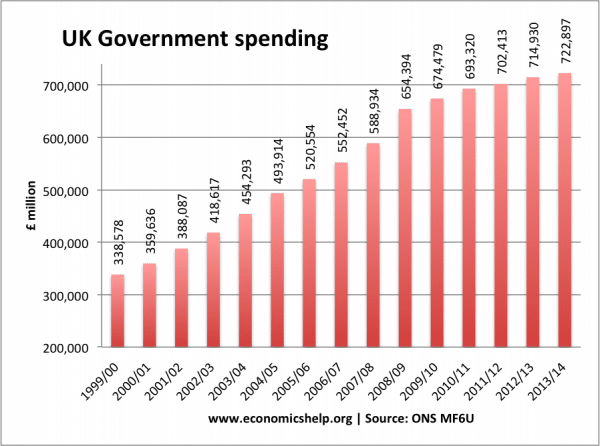Readers Question: Why are there government spending cuts at a time of rising government spending?
One of the confusing elements of ‘austerity’ and government spending cuts is that from one perspective, we can have a rise in total government spending – but some areas of government spending see cuts.
Source: ONS Public Sector Finances MF6U – October 2014
What do we actually mean by government spending cuts and austerity?
Cutting government spending
When we talk of cutting government spending it can mean various things
- An actual fall in total nominal government spending. – Unadjusted for inflation, government spending falls.
- A fall in real government spending – adjusted for inflation
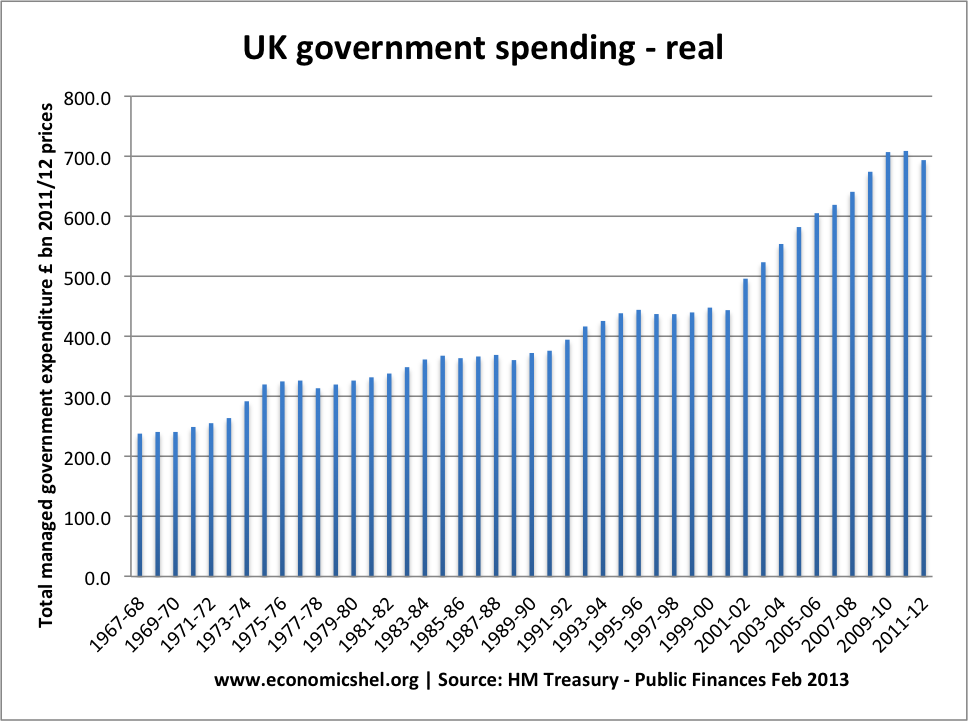
The UK did have a fall in real Government spending in 2011/12 – it was relatively small. But, it was a rare occasion where real government spending actually fell.
3. A fall in government spending as a % of GDP
If we have economic growth of 3%, but government spending is rising by 1% in real terms, then government spending as a % of national income will fall. This means the government will be spending a smaller share of the national income.
Forecasts of Government spending
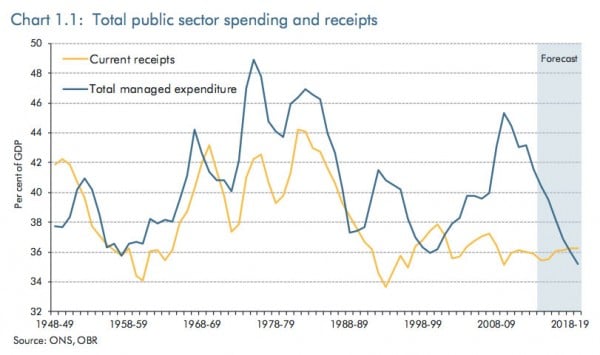
Part of the spike in government spending as a % of GDP is due to the recession of 2009. In the recession, GDP fell 6% – so you would expect a cyclical rise in Government spending as a % of GDP.
But, the continued fall in Government spending as a % of GDP will require strict spending limits / cuts until 2018/19.
4. Ring fenced spending
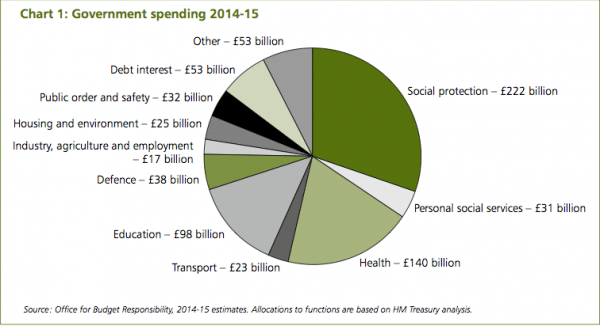
Within total government spending of £722.9 billion (2013/14), the largest departments are ‘ring fenced’. This means the government is committed to increasing spending in these areas. These are health care, education and the international development budget (which is protected at 0.7 % of GDP). National defence is also now ring fenced at 2% of GDP. In addition, pension spending is effectively ring fenced, with the triple-lock guarantee. Again pension spending is a major component of government spending.
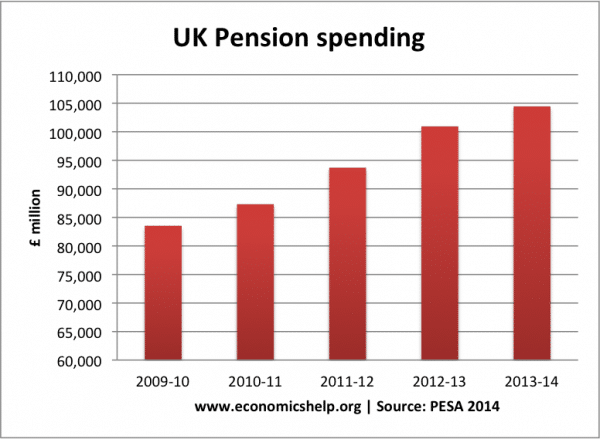
Spending on housing benefit has also risen from £19.4bn (2009) to £24 bn (2014) because of rising house prices and rents.
Cuts have to fall elsewhere
With these major departments seeing significant rises in government spending, attempts to limit the growth of real government spending – and reduce spending as a % of GDP, requires other departments to cut spending in real terms.
These departments are the less ‘politically popular’ departments, such as.
- Communities and local government – 30% cuts over the next four years
- Home office / policing
- Transport – cuts of 30% to current budget
- Environment, food, rural affairs – Department likely to cut back on environmental
- Tax credits – 30% cut
Therefore, overall government spending may be rising, but we still can have quite drastic cuts in particular departments.
5. Government spending not keeping up with expectations / possibility
In an area like the national health service, the demand for health care can rise faster than inflation.
- With medical advances, there is better technology for treating patients. But, these improved health care services mean spending on health care may rise faster than economic growth. In recent years, health care inflation has been higher than general inflation.
- Ageing population / obesity. Changes in the structure of the population are creating more demand on health care treatments. An ageing population requires greater health care services. Also rising levels of obesity create greater demand on health care.
Even if government spending on health care rises 2% in real terms – this may not be enough to meet the even faster rise in demand for health care. Thus, it may feel like there are spending cuts – because waiting lists rise and there is a shortage of beds. The service people experience may be worse. You could argue, the government is cutting the quality of the service, because spending is not keeping up with growing demand.
It is not just health care. An increasingly congested UK has a serious transport problem, requiring a need for capital investment to avoid bottlenecks.
Related

